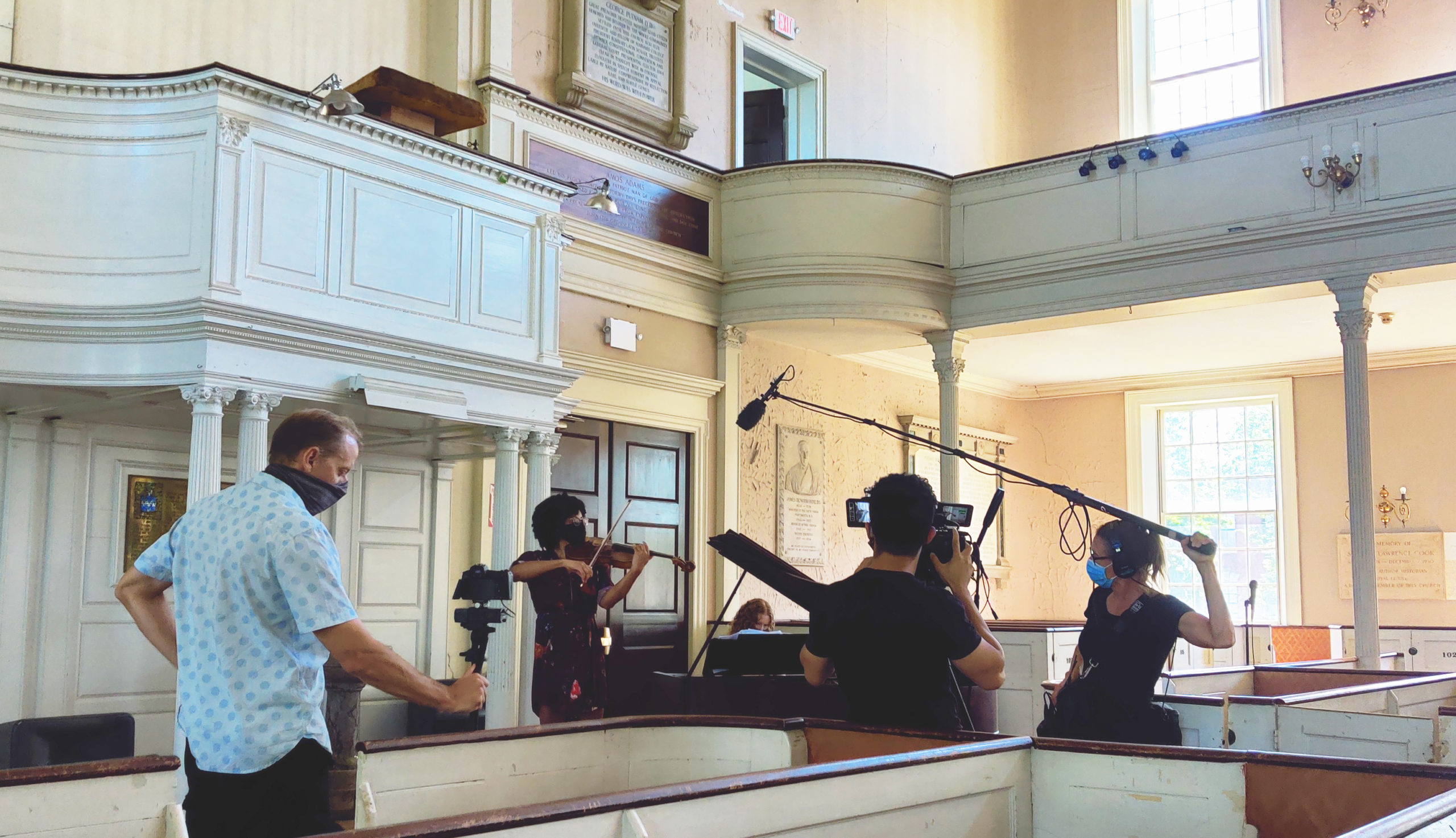
After the March lockdown here in Massachusetts, we wondered what the implications would be for video production during COVID-19. Fortunately, in the same way that folks switched their in-person meetings to Zoom, our video productions also went virtual, and so work continued. Then, starting in July, some folks began to inquire about returning to in-person filming.
The nature of our productions makes the return to in-person filming a little less complicated. We don’t have big crews, for example, nor are we filming action movies with actors in combat! Instead, we are producing documentary-style videos that combine one-on-one interviews with b-roll. We are still hampered by the inability to film b-roll because just about everyone is still remote, and so there aren’t kids in schools, workers in their offices, etc.
Nonetheless, we have learned a few things from our recent productions:
There is a ton of advice floating around on the safest procedures for video production, but a lot of it isn’t so relevant for us (like recommendations for how to work with actors). So we created our own protocol that we shared with both crew and clients. It includes things like wearing masks at all times until it’s time to be interviewed (unless you’d like to keep your mask on), let interviewees apply their own powder, use boom microphones and skip the lavalier mics, etc. Sharing these ground rules sets expectations, and they also have been helpful for starting the conversation about other requirements that clients might have. This helps ensure that everyone is on the same page.
Being sensitive to people’s needs is a good life philosophy regardless of circumstances, of course, but especially so during COVID days! So, for one client, we were filming in a large, historic building. There was plenty of opportunity to film her from a distance, allowing her to remove her mask while we recorded her. I first recognized the importance of masks, then presented her the option to go maskless from a distance, but as soon as I noticed her hesitation, we immediately encouraged her to keep her mask on.
This is directly tied to the point above. We assume from the start that people are nervous. A doctor we interviewed last week joked about feeling uncomfortable taking off his mask for our interview. It was clear he was only partially joking – after his comment he immediately assured us that he was safe because he had been recently tested.
The protocol mentioned above is meant to keep people safe and healthy and help assuage fears. We also bring a sanitation kit of gloves, wipes, sanitizer and tissues. I scrape powder onto individual pieces of paper plate and invite interviewees to powder themselves. After those first few minutes, it usually becomes clear what the level of nervousness is, and someone might ask that we powder them instead, and so we adjust.
I think all of this boils down to a central idea for me. Namely, all the things that were important before when interacting with others – communicating well with each other, being sensitive to one another’s needs, etc. – have become even more important in the collaborations between video producers and their clients. In other words, use the uncertainty of our current situation as an opportunity to take your normal person-to-person skills and enhance them up another level or two!